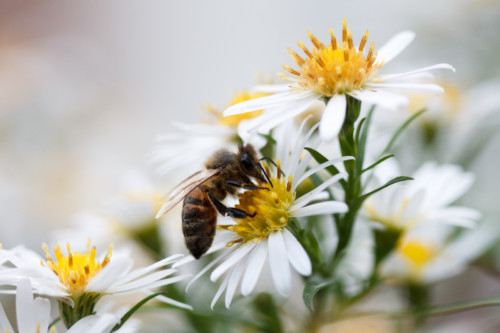New App Shows How Being “Bee-Friendly” Can Help Your Business
As bee populations continue to decline worldwide, there have been a number of pro-bee projects enacted, ranging in form from the utopian to the entrepreneurial. “Save the bees” initiatives tend to target the public on a broad scale, however, mobilizing action in general, rather than with a directed strategy.
Enter Insu Koh and Taylor Ricketts: researchers at University of Vermont who are developing a new app that empowers farmers– a population with the most to lose (and gain) from bees.
“The app will do a pollination, productivity, and eventually, a cost–benefit analysis,” Eric Lonsdort, the app’s co-lead, explained in a Gund Institute announcement. “Farmers can compare scenarios, and then determine which [bee-friendly] choices bring the best return on investment.” Options for the “bee-friendly choices” include practices as simple as planting pollinator approved flowers to bringing in a batch of bees to populate the landscape, and users will be able to enter their specific address to see personalized scenarios.
In order to simulate these highly specific projections, the app capitalizes on data from the first ever bee map (a project helmed by Insu Koh), which was released in 2015 to highlight areas where bee populations were in decline. An answer to former President Obama’s call for an assessment of bee health in America, the map pinpointed trouble spots across the states, most of which were located in agriculture-heavy areas like the Central Valley and the Corn Belt.
Now, with a current administration that has little interest in federally regulating the environment, the private sector is increasingly being seen as a means of addressing Climate Change during the crucial next four years. Though it’s still in its beta testing phase, the app has the potential to transform the agriculture industry by highlighting the economic dimension of bees (which is, sadly, often the most persuasive means of argument). The app (currently still without a name) is set to go live later in the year.
To learn more about the project, visit the Gund Institute’s website.



































